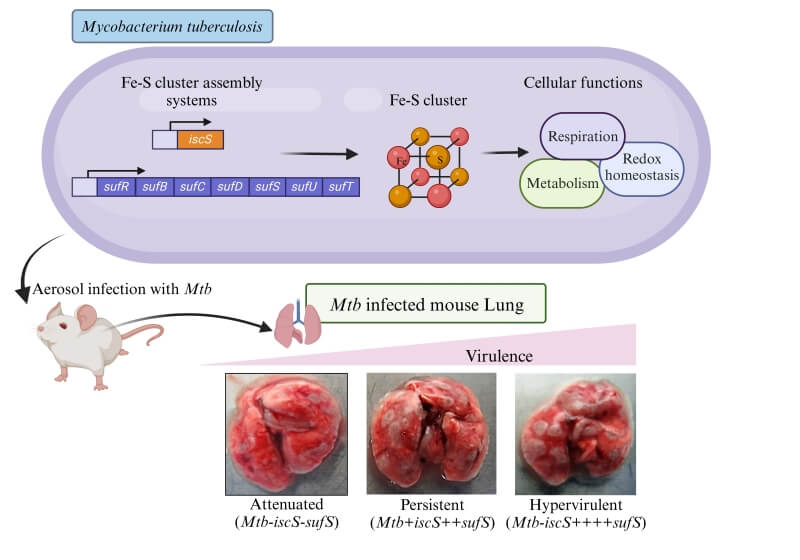Bangalore, December 28, 2023
In a significant advancement in the fight against tuberculosis (TB), researchers at the Indian Institute of Science (IISc), in collaboration with the National Centre for Biological Sciences (NCBS) and the Institute for Stem Cell Biology and Regenerative Medicine (InStem), have identified a key mechanism that enables the tuberculosis bacterium to persist in human hosts for extended periods. This discovery, published in Science Advances, revolves around a single gene crucial for the production of iron-sulphur clusters in the Mycobacterium tuberculosis (Mtb) bacterium.
Tuberculosis, caused by Mtb, can reside in the human body for decades without manifesting any symptoms. The bacterium’s survival strategy involves hiding within oxygen-limited areas in the lungs, entering a dormant state where it neither divides nor engages in active metabolism. This state of dormancy allows Mtb to evade the immune system and the effects of TB drugs. As Mayashree Das, the first author and a Ph.D. student at the Department of Microbiology and Cell Biology (MCB) at IISc, explains, understanding this persistence is crucial for eradicating TB.

Amit Singh, an Associate Professor at MCB and the study’s corresponding author, led the team in cultivating Mtb under controlled conditions. They focused on the role of iron-sulphur clusters, essential for several proteins in Mtb, facilitating vital cellular reactions like respiration and carbon metabolism. These clusters, comprising iron and sulphur atoms in various configurations, are predominantly produced by the SUF operon in Mtb. However, another single gene, IscS, also contributes to their production, raising questions about its specific role.
Investigating this, the researchers created a mutant version of Mtb lacking the IscS gene. They discovered that under normal and low-oxygen conditions, the IscS gene is primarily responsible for producing iron-sulphur clusters. However, under oxidative stress, where the iron atoms in the clusters become oxidized, the SUF operon is activated to meet the increased demand for new clusters. This finding revealed the dual mechanism by which Mtb manages the production of these crucial clusters.
The study further explored how the absence of the IscS gene affects disease progression. In mice models infected with the mutant Mtb strain, the absence of IscS led to a severe form of the disease rather than the typical persistent, chronic TB infection. This was attributed to the unregulated activation of the SUF operon, resulting in hypervirulence. Remarkably, depleting both IscS and the SUF system significantly reduced Mtb persistence in mice, indicating the critical role of IscS in regulating the activation of the SUF operon and thus influencing TB persistence.
Additionally, the researchers observed that bacteria lacking the IscS gene were more susceptible to certain antibiotics. This insight opens new avenues for exploring combined therapeutic strategies using antibiotics and drugs targeting the IscS and SUF systems. Singh expresses optimism that a deeper understanding of these systems in Mtb could eventually lead to effective strategies for eradicating TB persistence.
REFERENCE:
Das M, Sreedharan S, Shee S, Nandy N, Banerjee U, Kohli S, Rajmani SR, Chandra N, Seshasayee ASN, Laxman S, and Amit Singh, Cysteine desulphurase (IscS)–mediated fine-tuning of bioenergetics and SUF expression prevents Mycobacterium tuberculosis hypervirulence, Science Advances (2023).
Venkat
Paid Financial Consulting to choose right insurance and mutual fund

